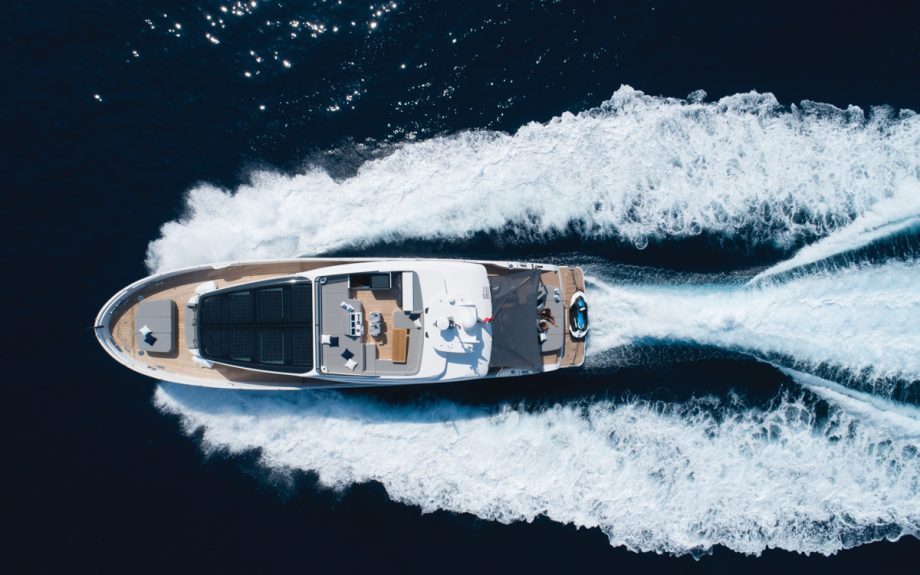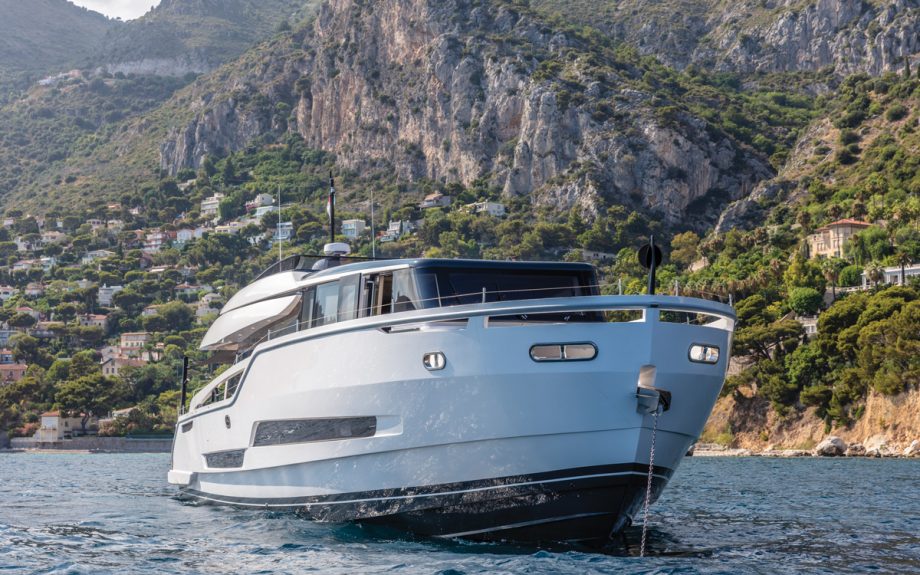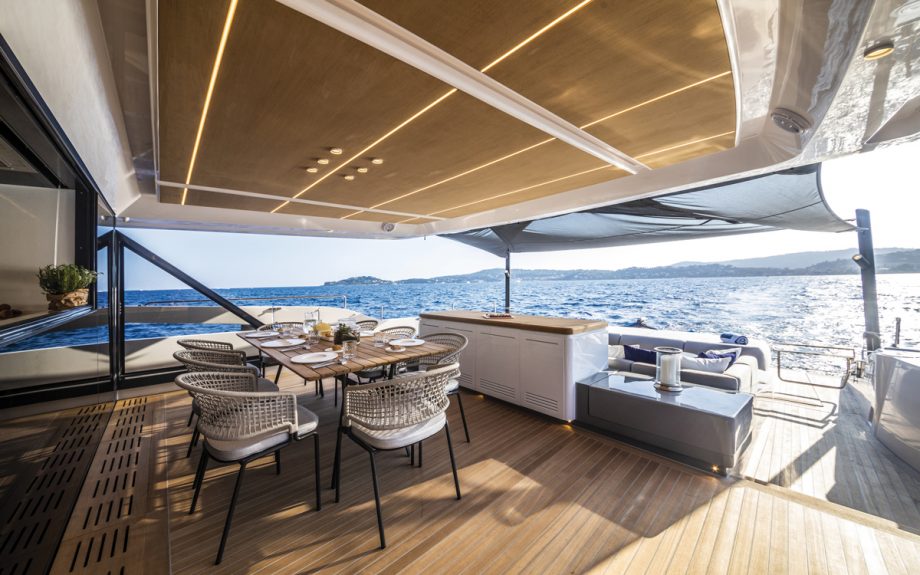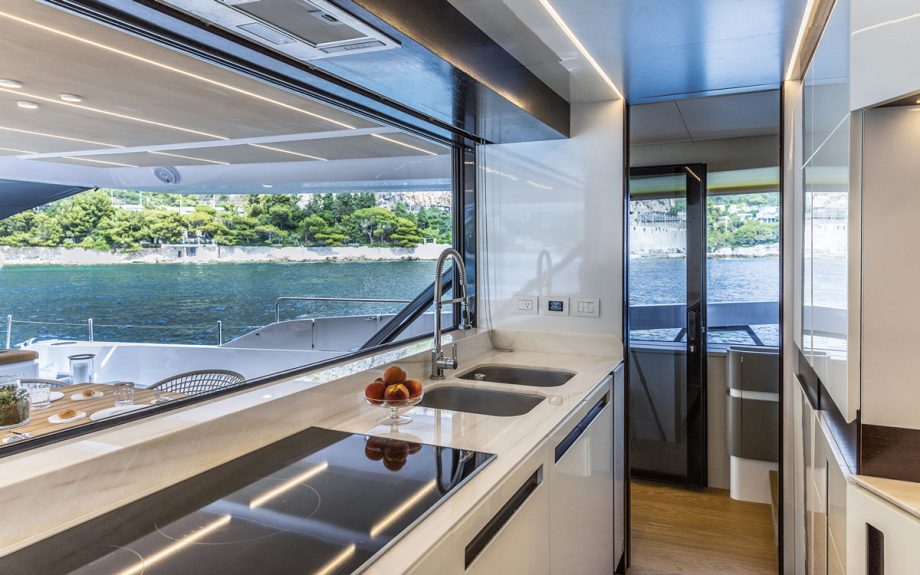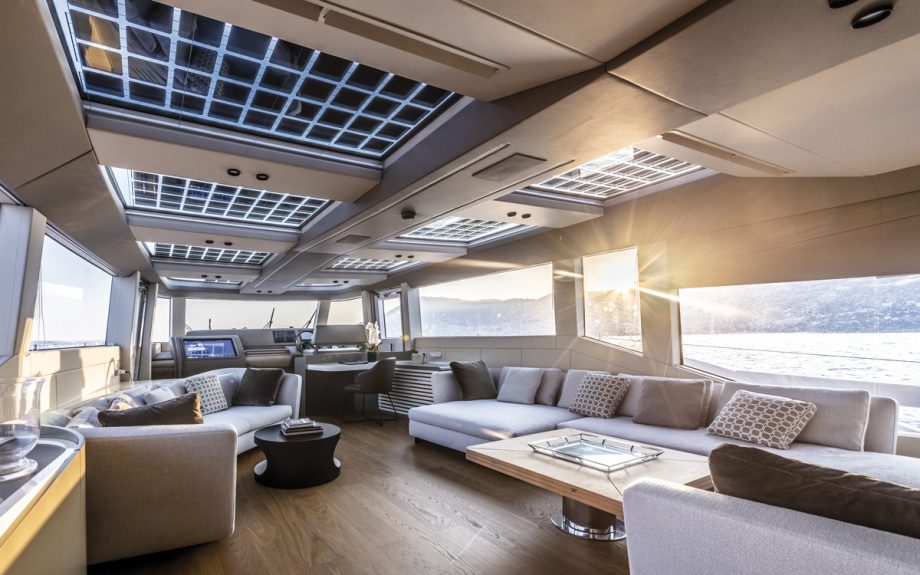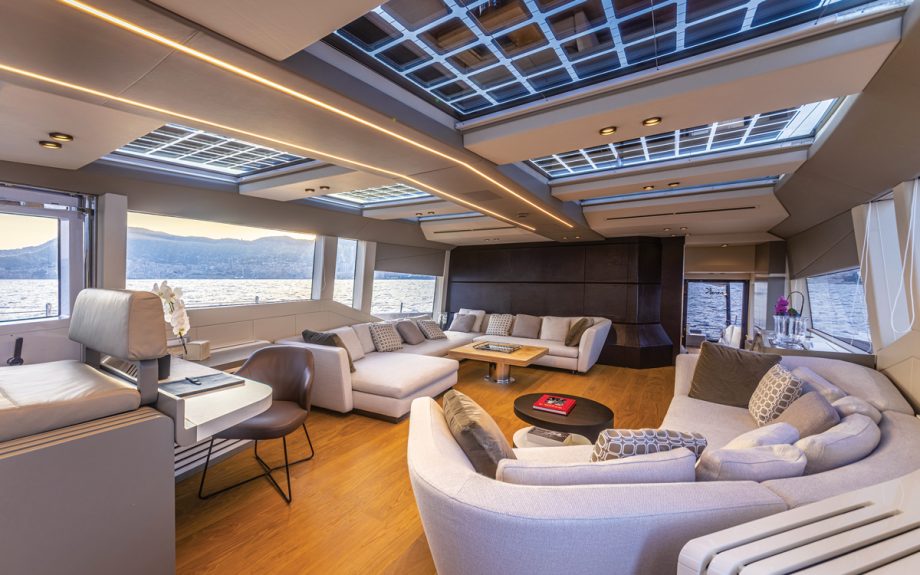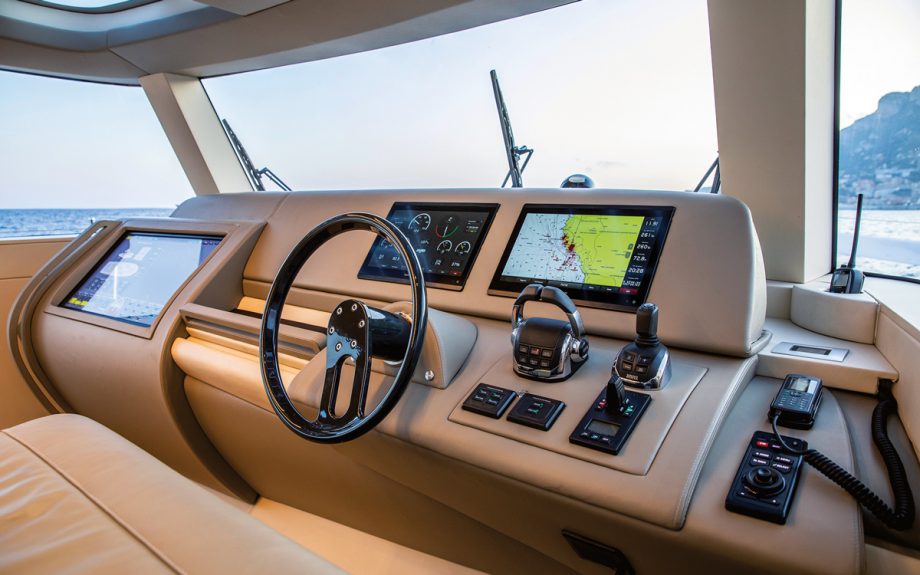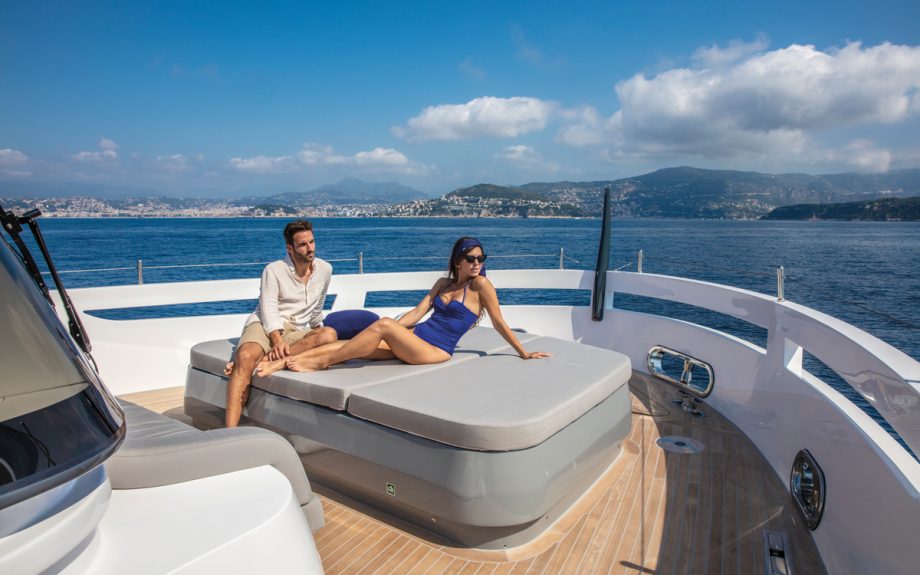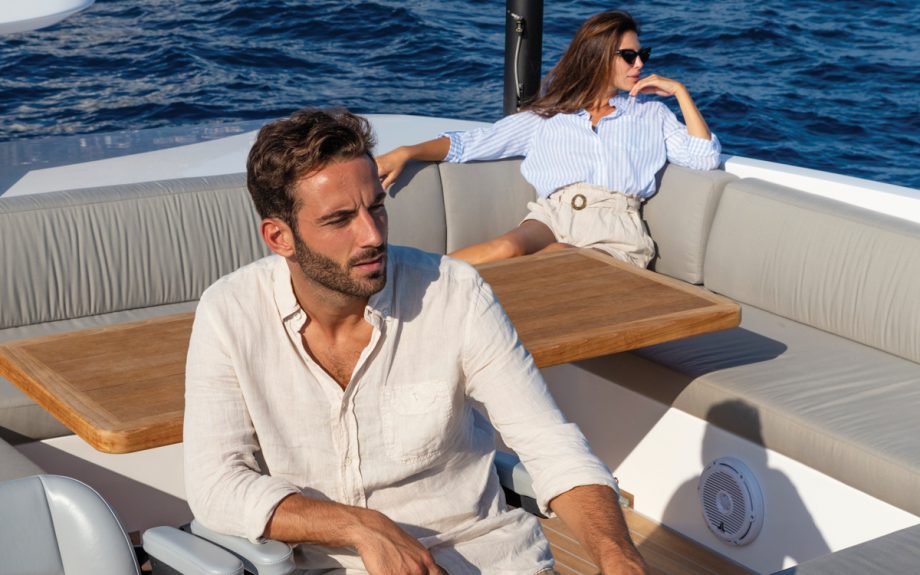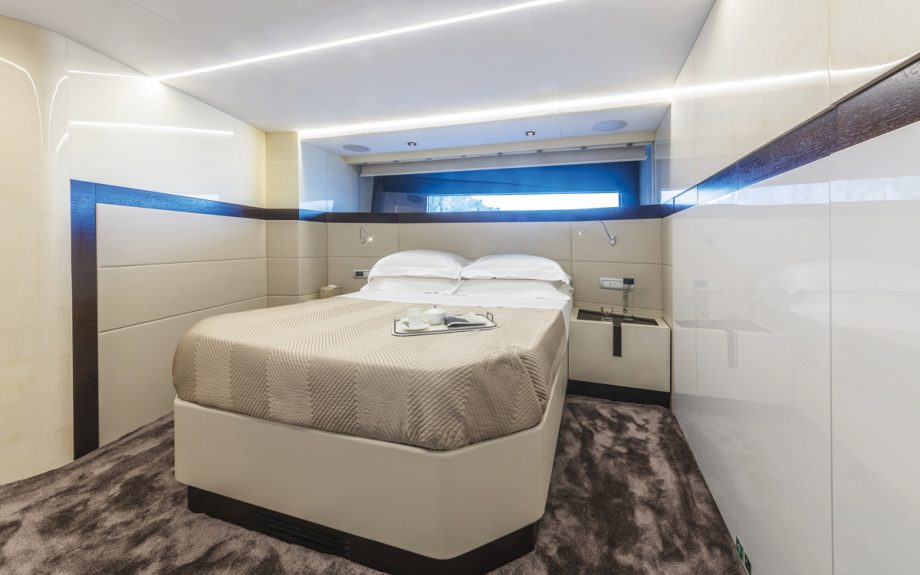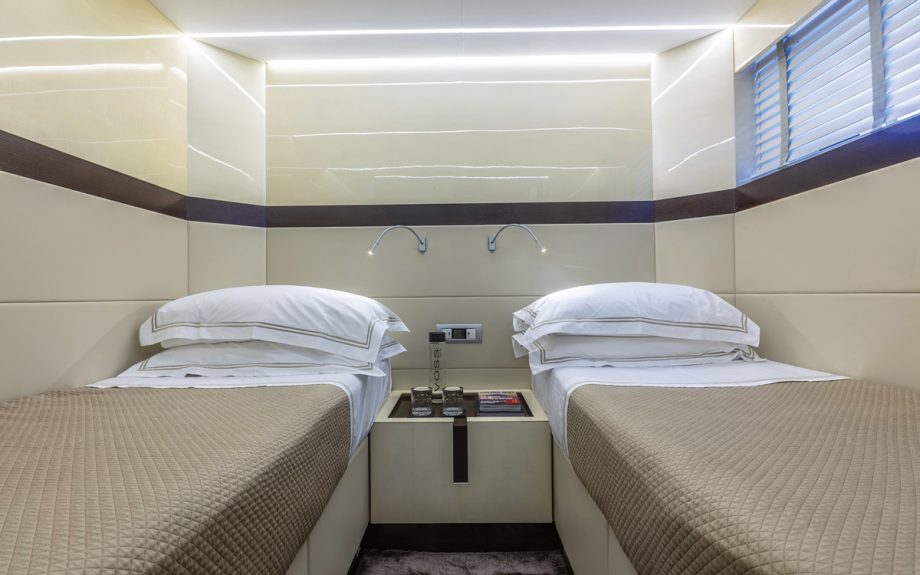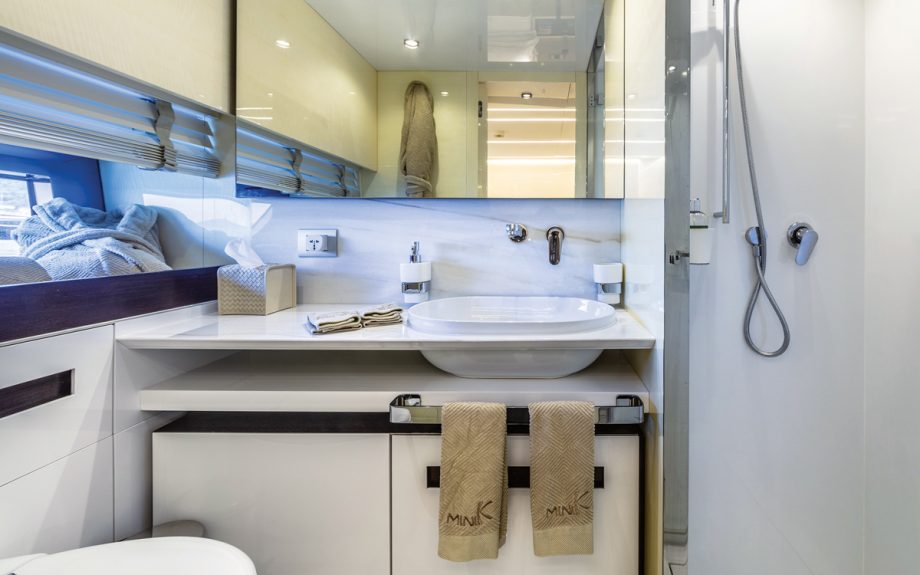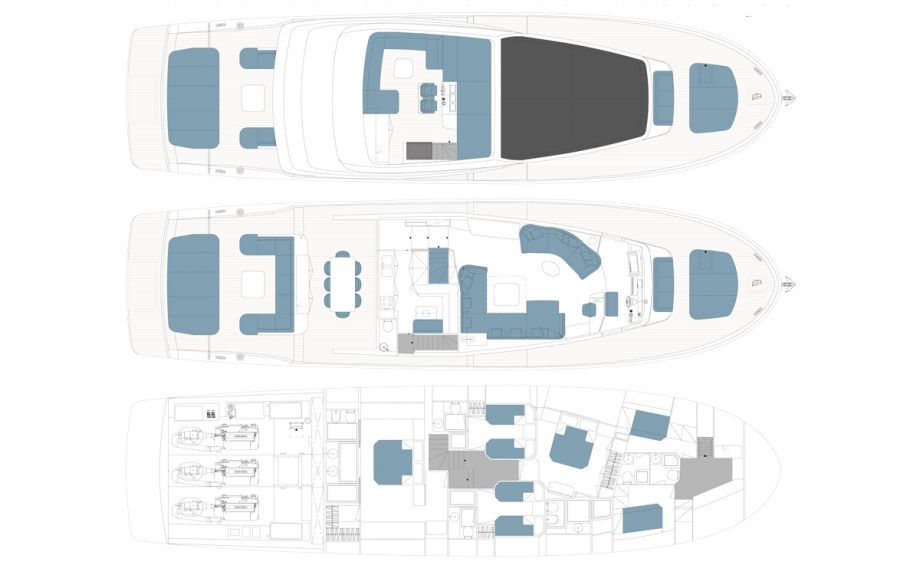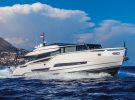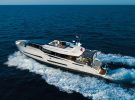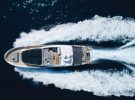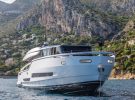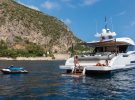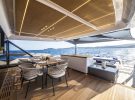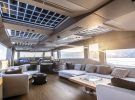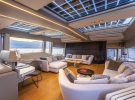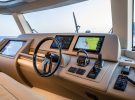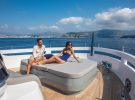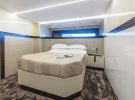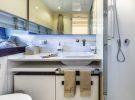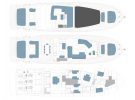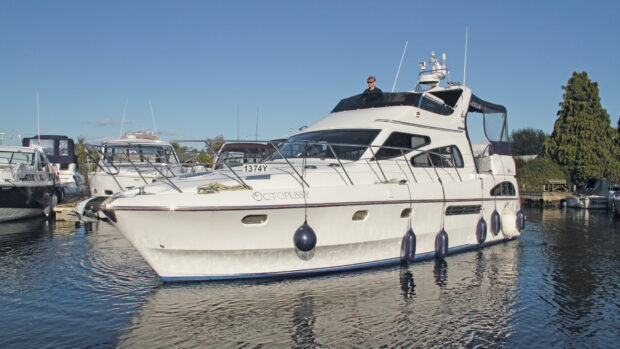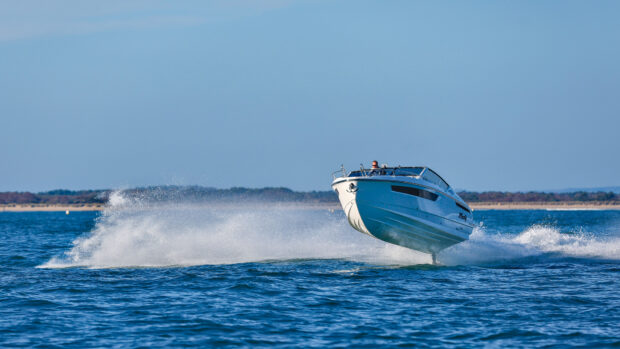Palumbo Superyachts is willing to go the extra mile when it comes to keeping customers happy, even if that means designing a new hull. Alan Harper traces the origins of the Extra 86 Fast
They say the customer is always right, although even in the world of superyacht building you have to assume that there are limits. But those limits might be further off than you think. Here’s one Ancona shipyard where the idea of going the extra mile doesn’t begin to cover it.
If the Extra 86 Fast seems vaguely familiar in profile there’s a reason for that – styling is by Francesco Guida, who also designed the Arcadia range of semi-displacement yachts. While their radical looks continue to divide opinion, I was an instant convert to the Arcadia as soon as I stepped aboard the first one: the acres of glass and wide open spaces made a compelling case, and the exaggerated cab-forward layout, with the wheelhouse almost on the bow, made a lot of sense once inside.
Power upgrade
The Extra concept is similar. The original Extra, a semi-displacement 76 introduced in 2018, has now been followed, as planned, by an Extra 86, a scaled-up version created by slicing the hull mould in half amidships and extending it forward to create more volume – not just for guests but for the crew quarters in the bow, which were deemed a little pinched in the 76.

The sense of size that you get from the exaggeratedly spacious main deck layout evaporates when you take the wheel
Fine. But then the first customer arrived. He liked the look of the twin-engine, semi-displacement Extra 86, but he needed a yacht that could go faster than the 21 knots the shipyard was promising. More horsepower was a relatively simple fix. The hull’s generous beam made fitting an entire extra engine fairly straightforward – and after all, a triple-IPS installation barely raises an eyebrow these days.
But it wasn’t quite that easy. With moderate lifting surfaces extending along much of its length, the U-sectioned hull shape was designed for medium-speed efficiency – to slip along in the high teens with minimal wake disturbance. Adding more horsepower would defeat the design, making the stern squat down and causing more wave-making drag without adding much in the way of speed.
It would have been a deal-breaker for most shipyards, but in this one the clue is in the name. Content with the concept and the interior layout, and understandably unwilling to let a prospective customer escape, Extra simply designed a new hull. It is a moderate vee aft, the flat panels supporting the weight of the extra engine.
Prominent chine flats provide extra dynamic lift, the hull is slightly wider, and the bow has a significantly finer entry than the original, to cope with the extra speed. Voilà: the Extra 86 Fast.
With such an extraordinary gestation, it might not come as a surprise that there’s very little that is ordinary about the rest of the yacht. The aft deck and cockpit, with its different levels for swimmers, sunbathers and diners, served by an aft galley with a wide serving hatch, works outstandingly well.
Two further steps up, along a corridor on the port side, the saloon feels both elevated and secluded from the rest of the yacht, with big windows and a glazed ceiling, complete with encapsulated Arcadia-style photovoltaic cells.
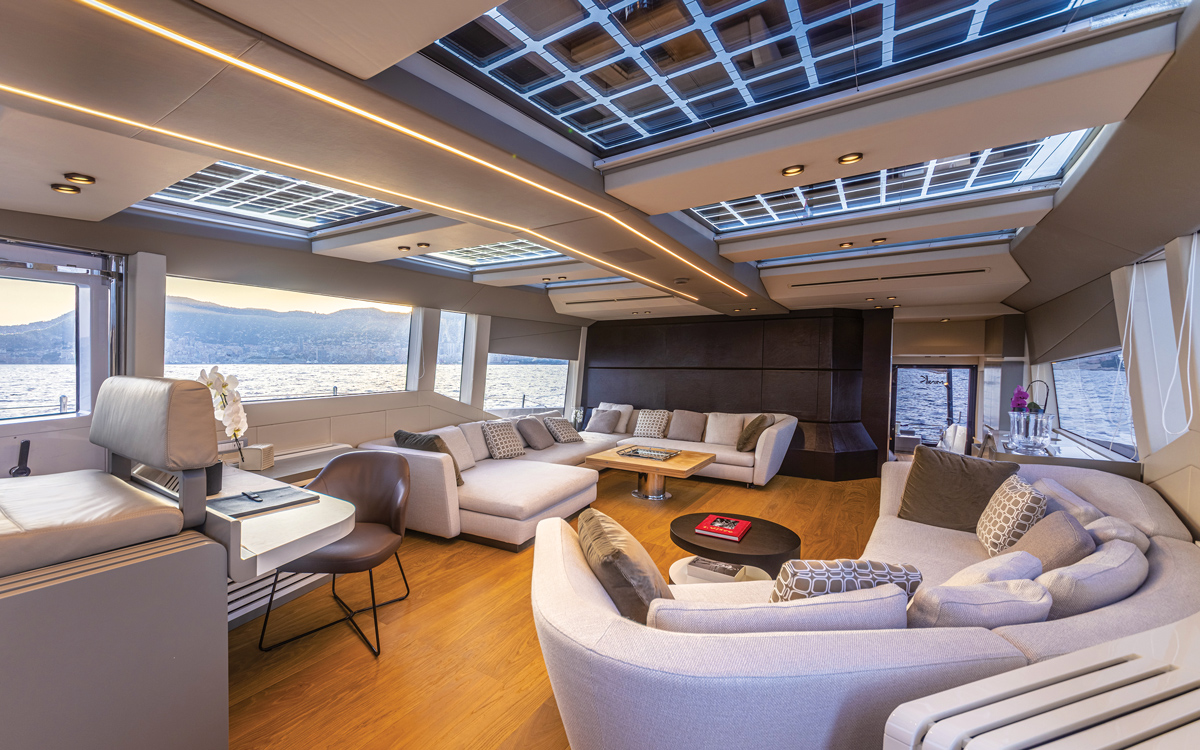
The foredeck has a forward-facing sofa and a sunbed and, thanks to the tapering shape of the deckhouse, a luxurious expanse of flat teak decking that feels enormous for a yacht this size. Meanwhile, reached via a companionway on the starboard side, the flybridge is comparatively small, in order to keep the saloon coachroof clear for solar panels.
But it does provide a commanding midships steering position, and plenty of seating and sunlounging space. The lower deck, by contrast, feels exceptionally spacious. The layout is slightly unusual, as although the huge, full-beam owner’s suite amidships and the paired twin-berth ensuites are what you might expect in a yacht of this class, the forward VIP suite occupies an asymmetric space, with an offset berth and a cliff face of wardrobes along the diagonal forward bulkhead.
The reasons for this cabin’s unusual plan are not obvious, but it certainly helps to create more space for the crew accommodation in the bows.
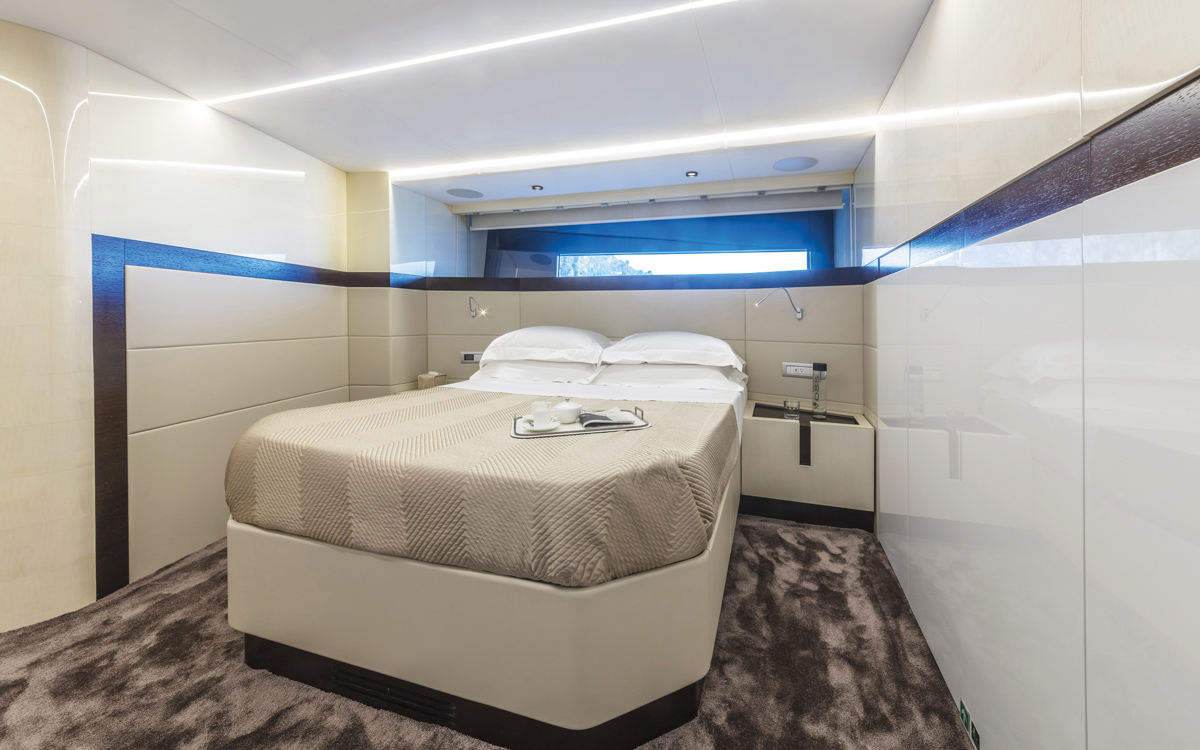
Stately home
It is an interior with much to recommend it. The shipyard is happy to entertain owners’ ideas about interior design and décor. Headroom is excellent at 6ft 6in to 6ft 8in (1.98m – 2.03m) and the volume available in this beamy hull has been well used. High-gloss lacquers and shiny marble suit a £5 million superyacht. However, plasticky push-catches on the wardrobe doors maybe don’t. And in one or two other aspects of the interior, perhaps, there was also room for improvement.
Maybe because of the number of people on board during our sea trial, I found the saloon layout rather awkward: the curved sofa on the port side extends a bit too far forward, creating a bottleneck where it is difficult for two people to pass.
The alternative version – the sole layout option offered in the 86 – is more traditionally formal, with a smaller sofa arrangement and a dining area backing onto the helm, which might not be to everyone’s liking but would at least improve the flow between the saloon and that port side door.
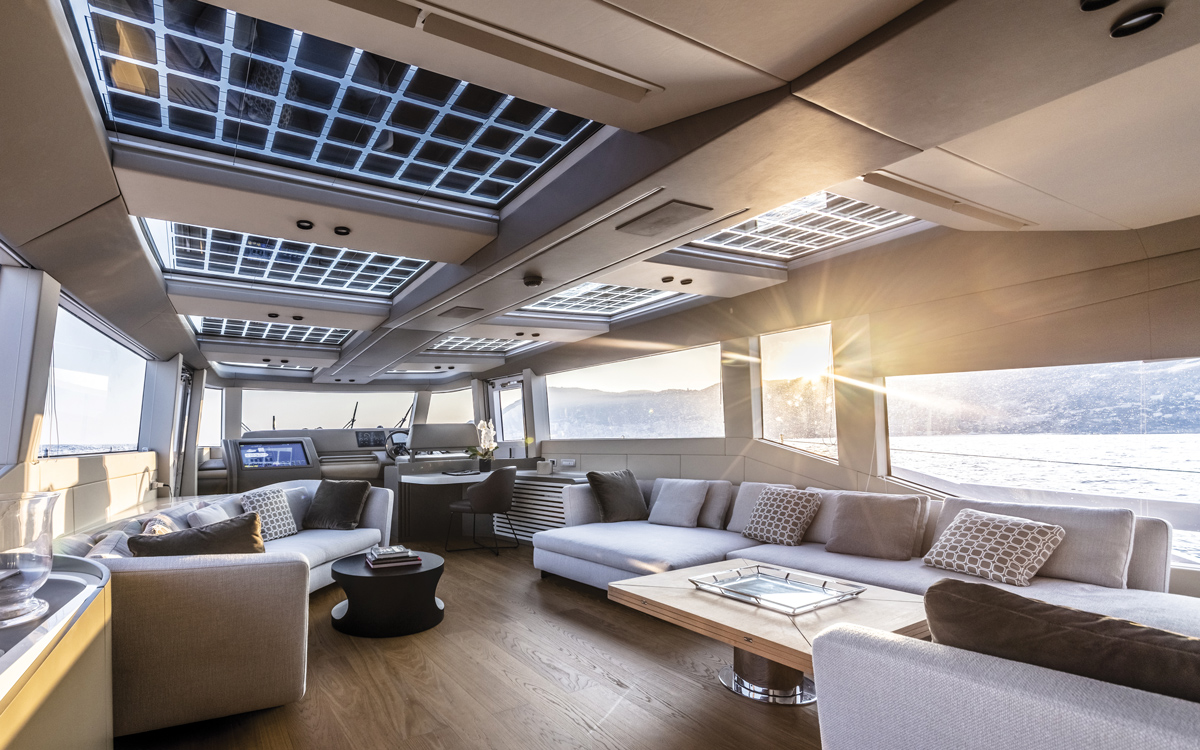
In the master cabin, the tall stowage units on each side seem unnecessarily intrusive, but that would be easy to fix. There is a rather unorthodox layout aft, where guests coming in from the cockpit via the side door find themselves in the galley on their way to the day head. This is also the only route to the upper deck companionway, for both guests and crew. It feels wrong.
Fast is a relative term, of course. With its extra 1,000hp the 86 Fast was always going to outpace the standard semi-displacement 86, but in our sea trial off Cannes it was clear that heavily loaded with fuel, along with full water tanks and a fairly large crowd on board, our particular Fast was not going to live up to its name with the 31 knots that the shipyard hoped for. In fact it made just over 26 knots. But its progress over the calm seas had other qualities.
There was a stately elegance to its acceleration, and minimal change in trim as the knots unwound quite willingly from the reel. The sense of size that you get from the exaggeratedly spacious main deck layout – it’s a factor not only of the distance between the cockpit seating and the helm, but also of the various changes in level, which together seem to belong to a much longer yacht – evaporates when you actually take the wheel and discover that the Extra 86 Fast is nicely responsive to the helm.
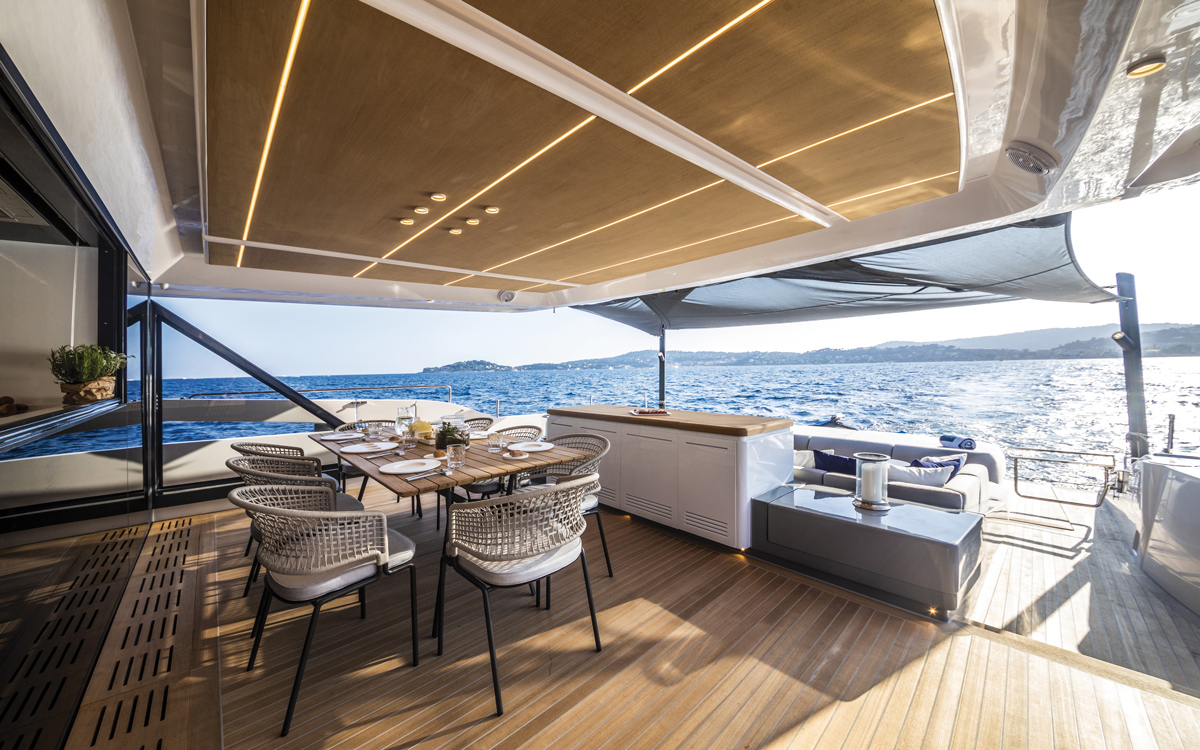
It heels inwards and can execute quite sharp turns with something approaching panache. And when our own substantial wake hove into view ahead, decorated with darting SeaDoos, that fine bow sliced through with an implacable authority.
Top speed is rather an academic subject in a big, luxurious cruising boat. We found the 86 Fast settled quite happily at speeds from about 17 knots to 22, which would be ideal for comfortable passagemaking. While helming from so far forward seems strange and slightly disconnected, not to mention remarkably quiet, the 86 Fast actually proved itself to be a pleasant enough driver’s boat from down below. And from upstairs, of course, with no noise at all but the wind and the waves to disturb you, the sensation is of pure, relaxed progress.
It turns out that this yacht’s owner was actually right twice. Once by virtue of being the customer – because the customer is always right – but then again because although the yacht he wanted didn’t actually exist, his insistence that it should turned out to be bang on. In fact, maybe he was right a third time – for choosing a shipyard that wanted to go that extra mile.
Price as reviewed:
£5,570,000.00 ex. VAT
Details
Starting price : €5,100,000 (ex. VAT)
LOA: 86ft 4in (26.30m)
Beam: 22ft 7in (6.90m)
Engines: Triple 1,000hp Volvo Penta IPS 1350s
Top speed on test : 26.3 knots
Cruising speed : 19.7 knots
Fuel consumption : 378lph
Cruising range : 333 miles
Noise : 62dB(A)
Fuel capacity : 8,000 litres (1,760 gal)
Water capacity : 1,500 litres (330 gal)
RCD category : B for 16 people
Design: Francesco Guida





